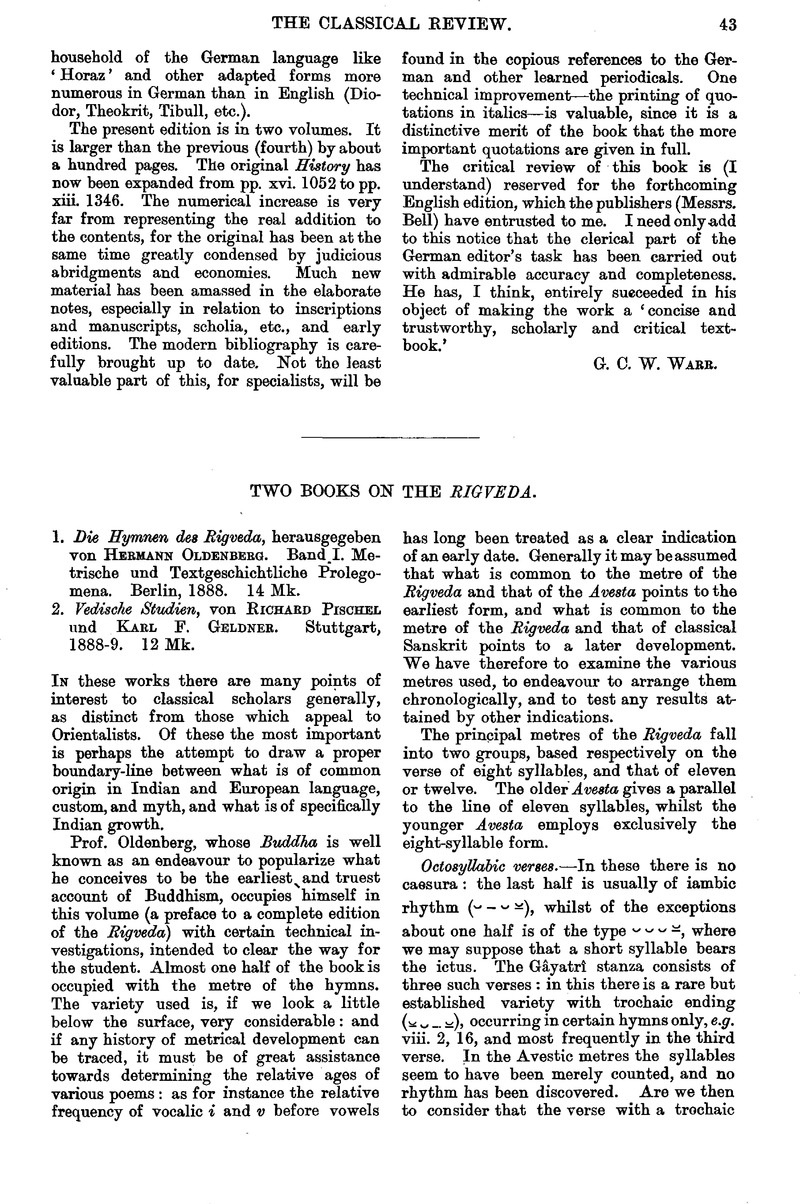No CrossRef data available.
Published online by Cambridge University Press: 27 October 2009

page 44 note 1 These hyinns are presumably of later date.
page 44 note 2 Where the caesura falls after the fourth syllable, the normal type now includes two forms of the second section, ![]() , the latter Of which was for merly spoken of as subnormal.
, the latter Of which was for merly spoken of as subnormal.
page 46 note 1 Cf. the Introduction to the St. Petersburg Lexicon: ‘wir glauben, dass ein gewissenhafter europäischer Erklärer den Veda weit richtiger und besser verstehen könne als Sāyana.’
page 47 note 1 A more careful examination of the passages quoted, to which should be added (as Prof. Cowell points out to me) Majjhimanikāya, p. 265 (Pali Text Society), the clearest of all, will shew that the presence of the gandhabbo is the last of three necessary causes of conception, and that gandhabbo here too denotes a supernatural being, and not, as Pischel infers, an embryo.